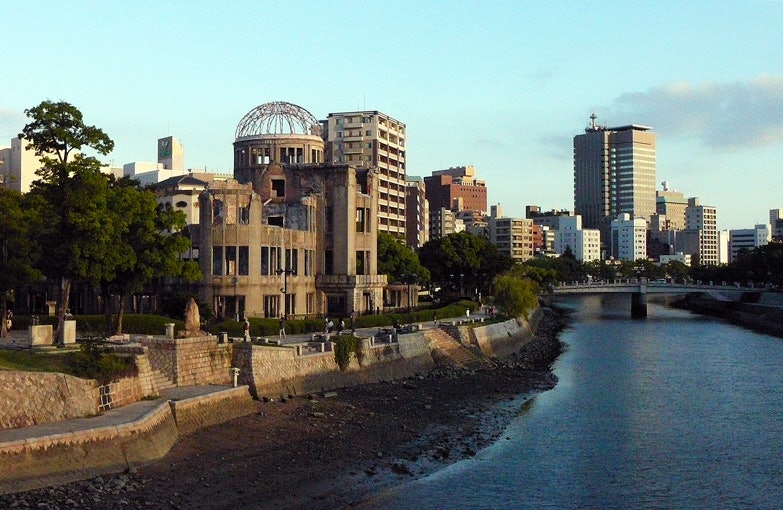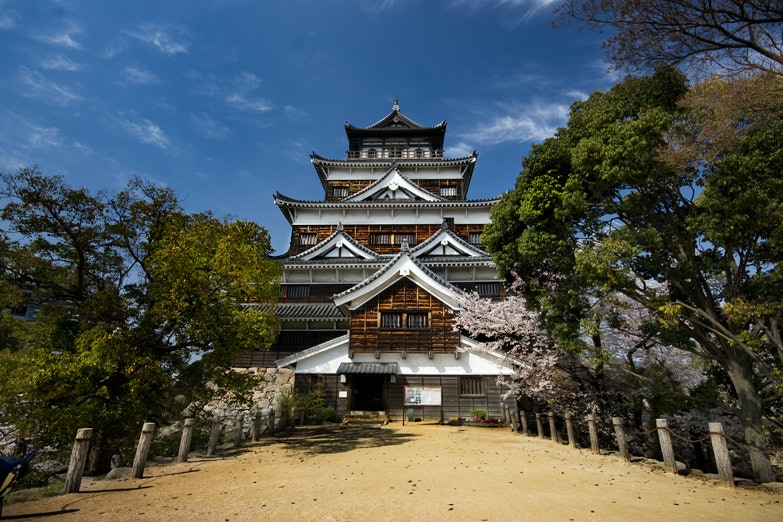
The 30 best countries, cities and regions to visit in 2025

Friendly, picturesque and a paradise for foodies. This description might not spring to mind when you hear the word 'Hiroshima', but word is starting to spread about this most surprising of Japanese cities. As the first city in history to suffer a nuclear attack, Hiroshima has a dark legacy but it harbours much more than ghosts of the past.
Time-pressed travellers visit the city on day trips (it takes 90 minutes from Osaka on the shinkansen) but staying for the weekend allows enough time to experience Hiroshima’s thriving food scene, a clutch of galleries and historic sights, and some of the wildest nightlife in Japan. Here's how to spend a weekend in Japan's most misunderstood city.

Morning: pay tribute at the A-bomb dome and memorials
The shell of the Atomic Bomb Dome (Genbaku) was one of very few structures left standing after the Allies bombed Hiroshima on 6 August 1945. In modern Hiroshima, locals have mixed feelings when they see a reminder of war dominating the river bank. But the dome's symbolism is complex: it certainly pays tribute to the lost and urges us not to forget the events of 6 August. But it also reminds onlookers of Hiroshima's dedication to eliminating nuclear weapons.
The iconic ruin is a natural place to start for visitors hoping to understand Hiroshima's past. From the dome, walk along the bank of the Ōta River to the Peace Memorial Park. The flame in the cenotaph is intended to burn until the last nuclear weapon has been destroyed. Further down the riverbank, allow some time to explore the Hiroshima National Peace Memorial Hall for the Atomic Bomb Victims. Prize-winning architect Kenzo Tange designed this underground monument to invite contemplation of peace. The rounded walls feel protective, and the fountain is intended as a symbolic offering of water for vicitims of the attacks.
Within four months of the Hiroshima bombing, up to 166,000 people had died of its effects. Understanding the scale of the attack can be confounding, so at Hiroshima's Peace Memorial Museum visitors are encouraged to explore individuals' stories. Volunteer guides, many of whom have personal connections to the bombing, explain the significance of each object on display - such as blistered roof tiles exposed to the bomb's heat rays. The museum is graphic in places: travellers with children should be cautious about exploring the reconstructions, which include visual depictions of radiation burns. Crucially, the museum is a focal point for Hiroshima’s tireless peace activism. Part of the exhibition displays engraved letters to world leaders from every one of Hiroshima’s mayors urging the abandonment of nuclear weapons. Witnessing how Hiroshima harnesses its association with tragedy towards the hope of a peaceful future is deeply affecting.

Afternoon: venture deeper into Hiroshima’s past
Few travellers can complete a visit to Hiroshima without being profoundly affected by the legacy of the bombing. But visiting only memorial sites does a disservice to today’s Hiroshima – as well as to the long history that came before. Step further back in time to a nobler era with a trip to Hiroshima-jo. The original castle (now faithfully rebuilt) was the seat of ‘Five Great Elders’, and the focal point of feudal squabbles for centuries. Visit in spring to enjoy a stroll around the gardens and to see the castle framed in cherry blossoms.
Evening: unwind with sport, shopping or cocktails
You won’t regret timing your trip for Hiroshima’s favourite pastime, baseball – check www.japanball.com to plan ahead. If balls aren’t flying, shop at the Hondōri arcade (shops stay open into the evening) before settling in at an izakaya (a cross between a casual eatery and a bar). Try Ninjo Ganko Yatai for a hearty okonomiyaki, an essential staple of the region. This savoury cake of batter, vegetables and noodles, fried to perfection and drizzled with sauce à la Jackson Pollock, will soak up the first of those cocktails as you bar-hop Hiroshima’s entertainment district (about a five-minute walk east from Hondōri). Get used to looking up as you walk the streets – a number of nightspots are on the upper floors and require a winding staircase or elevator ride to be found.
Morning: explore Miyajima Island
Catch an early ferry from Miyajimaguchi (25 minutes south of Hiroshima station) to Miyajima (the train ride and ferry trip are covered by JR Passes). Stay above deck for the short boat ride: you'll be able to glimpse vermillion torii (traditional Japanese gates at the entrance to a Shinto shrine) protruding from the navy-blue waters of the Inland Sea. On landing, turn right out of the ferry terminal and make your way along the water’s edge; you’ll soon stumble on the island’s famous residents, miniature deer. The deer totter along the harbourfront, nose into shopping bags and generally make an (adorable) nuisance of themselves, but try to resist getting too close (they’re wild animals after all). After a few minutes’ walk you’ll reach the stunning Itsukushima Shrine – its wave-lapped location reflects its dedication to the daughters of Susano-o no Mikoto, Shinto deity of storm and sea. Take some time to wander the scarlet-striped temple buildings (be prepared to slip off your shoes).
Lunch: succulent island oysters
There’s only one thing you should be eating: the famous local oysters, preferably still sizzling from the barbecue. Stop at Kaki-ya for some of the best but simply following your nose around Miyajimacho will steer you to a delicious lunch.

Afternoon onwards: culture and nightlife
Miyajima has plenty to detain you if you have a few days in the area – and we’re not just talking about the world’s largest rice scoop. But if you’ve patted your full belly, hop back on the ferry to explore Hiroshima’s cultural scene. The Museum of Art houses a modest collection of big-hitters (Monet, Picasso and the like), but the constantly changing exhibitions at Hiroshima City Museum of Contemporary Art are best for experiencing the thudding heart of the region’s art scene. Want something a little more leftfield? If you reserve ahead, you can enjoy the spectacle of Japan’s largest assembly line at the decidedly odd Mazda Museum.
It’s your last night in the city, so go out with a bang by scouring the lanes near Aioi-dori for a promising karaoke bar, or finish your night with some raucous rock music mayhem at Koba (if the bar staff offer to show you ‘Hiroshima Star Wars’, say yes). Tomorrow you’ll leave Hiroshima with a sore head, but happy memories.
Anita Isalska is an editor and writer based in Lonely Planet’s London office. Follow her on Twitter @lunarsynthesis.

For cultural treasures, pounding nightlife and where to fill your belly with sashimi, pick up a copy of Lonely Planet's Japan travel guide.
Dream of more adventures in one of Lonely Planet's expert-reviewed hotels and hostels in Hiroshima.
Plan with a local
